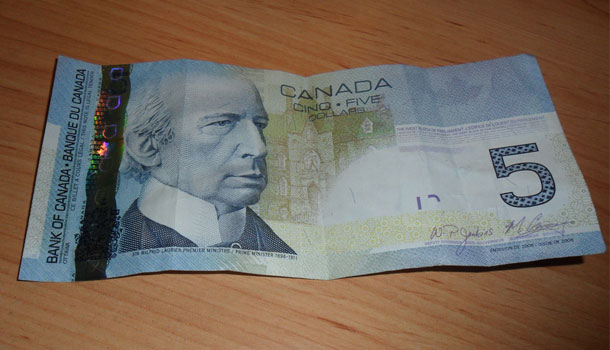Table of Contents
Banff, Alberta Currency 101
The introduction to Canada may not be as intimidating as the rainforests of Brazil, for example, but it is definitely worth the effort for foreigners to have an idea of what awaits you. Below are a few tips to getting you started in Canada and Banff.
Coins/Notes
As might be expected, Canada has both paper money and coins. One thing to be aware of is that us Canadians affectionately refer to our one dollar coin as a loonie and the 2 dollar coin as a toonie. Five bill denominations ($5, $10, $20, $50, $100) are all in different colours and the latest issues feature the Queen or former Prime Ministers on the face, and Canadian cultural and historical icons on the reverse. There used to be a picture of Lake Moraine on the $20 note. Check your bigger notes for watermarks to ensure that they are not counterfeit.
Credit Cards
Most merchandisers accept credit cards especially around Banff and the more touristy spots. Be aware that most cards charge a transaction fee for foreign currency transactions. Also, it is a good idea to inform your bank prior to travelling that you will be abroad. It is becoming more common by anxious banks to block credit cards if they notice unusual transactions on your credit card and it can really be diffiuclt to enjoy yourself without a penny to your name.
Travellers’ Cheques
This isn’t a very popular option around Canada and they may also be subject to a fee.
ATMs
ATM (Automated Teller Machine) networks include Plus/Visa and Cirrus/Master Card. Travellers have often had problems using foreign cards in Canadian ATM´s but this problem can again generally be solved by talking to your bank prior to travelling.
Banks or Credit Unions
Avoiding the easy option of changing your currency at the hotels front desk can go a long way to keep your spending in check. Instead, head to a local bank or credit union. Some banks have the daily exchange rate posted at the entrance. You will receive a much more favourable rate this way. Some shops will accept American dollars but few other currencies will be considered.
Major Banks of Canada
There are 5 big bands in Canada that dominate the industry. RBC (Royal Bank of Canada), TD Canada Trust (Toronto-Dominion), Scotiabank (Bank of Nova Scotia), BMO (Bank of Montreal), and CIBC (Canadian Imperial Bank of Commerce).
Airport Exchange kiosks
Another easy option which is best avoided if possible. Rates are not great.
Regarding U.S. dollars
Canadian businesses do often take U.S. currency but only as a courtesy so don’t get too used to it. You will almost certainly receive Canadian dollars for your change.
Crossing the Canada-U.S. Border
Crossing the border until recently was quick and painless. It still is in relation to other countries but there are more uncertainties involved. Recent changes may affect what documentation travellers need to visit Canada and return home. For non-American visitors, a passport will usually suffice but there are lots of exceptions: http://www.cic.gc.ca/
Tipping and Gratuities
In Canada, rarely is the gratuity included in the bill. 15% is considered standard and 20% for exceptional service. Keep an eye on the bill when it comes to make sure that the tip is not included. You don’t want to pay over the odds. Tipping is also common in hotels, hairdressers and more.
Check out the visitors’ information section for more information

